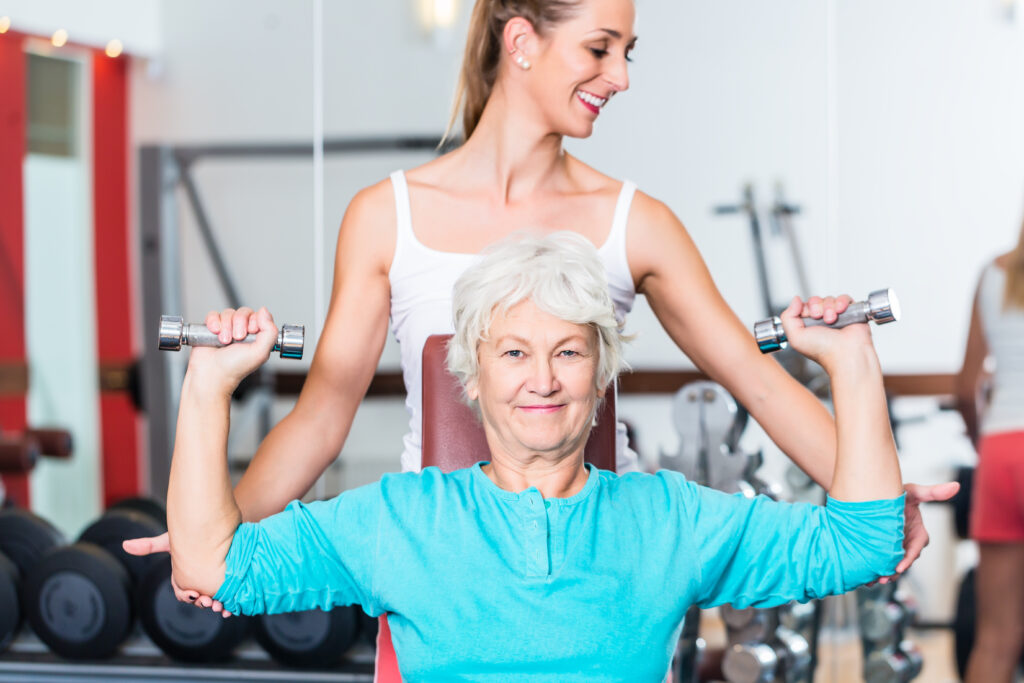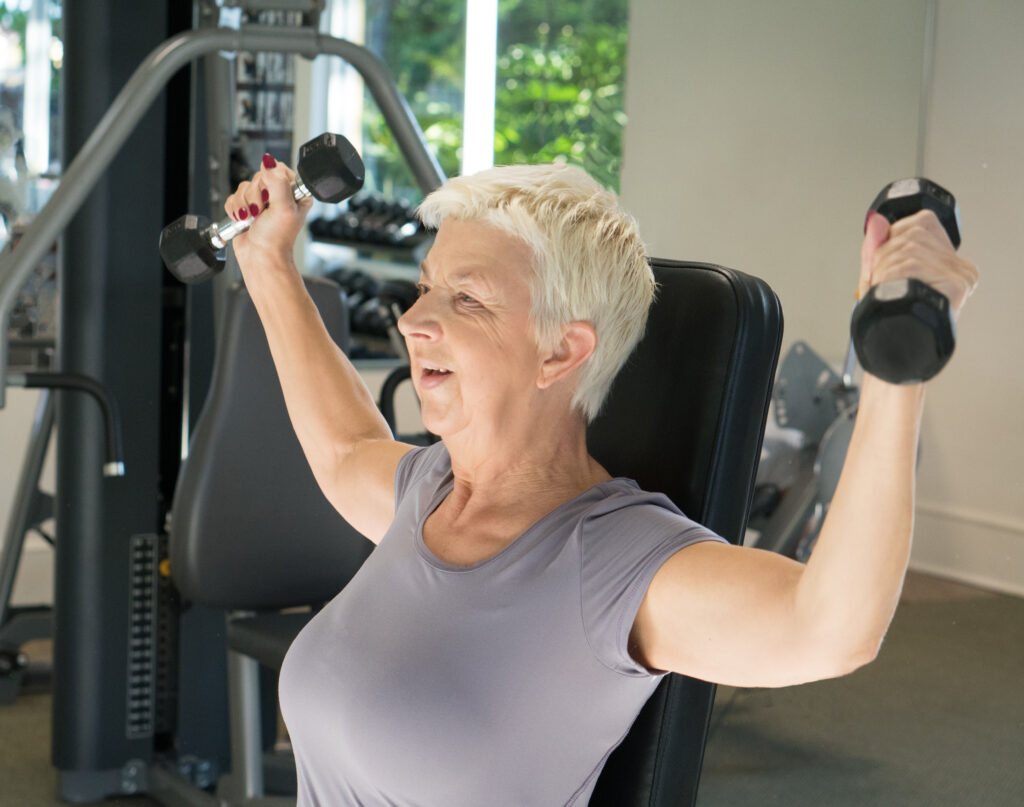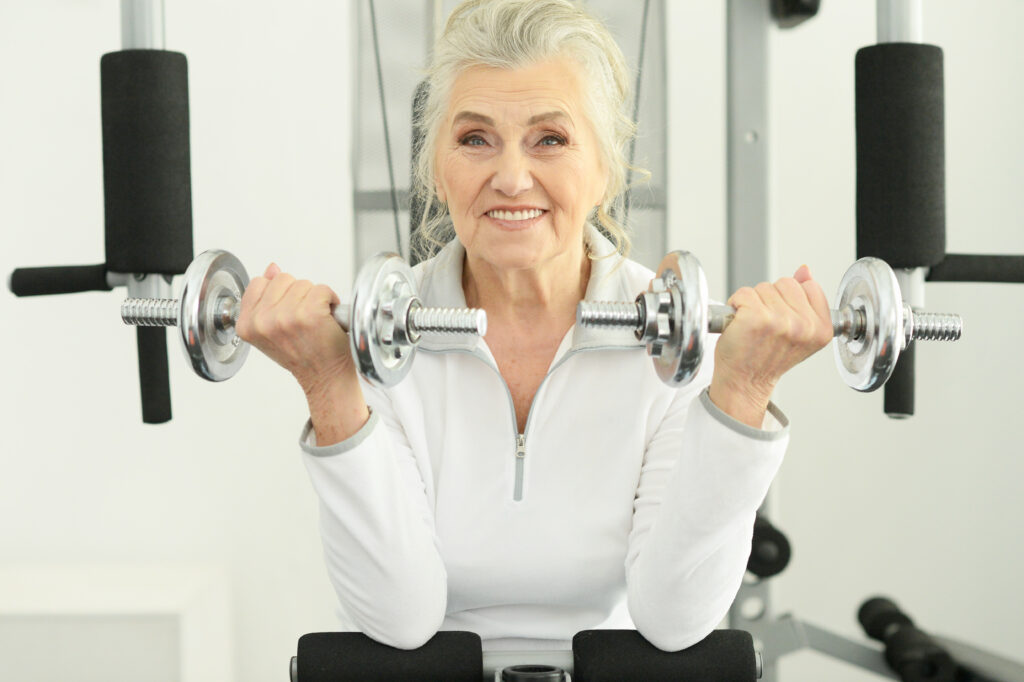Many women over fifty don’t know that senior strength training can slow down the aging process. It’s a simple habit that can support both the body and mind. A workout routine for women over 50 can help with healthy aging. But what makes it effective?
Imagine doing just 12-15 strength exercises to strengthen your body. Rest for 1 minute between sets to make it fun, and not tiring. If a 30-second plank can strengthen your core, wouldn’t you do it every day?
A 10-minute workout with 10 reps of each exercise can boost your fitness level. Women over 50 like routines that are short but effective. Doing just three to four circuits can make you feel great and improve your health.
Strength training fights against muscle loss and hormonal changes. It can even help burn fat by boosting your metabolism. By doing strength exercises, women over 50 can fight chronic diseases and keep their muscle mass.
To learn more about the benefits and how to start your own routine, check out this fitness guide.
Understanding Sarcopenia and the Aging Process
Sarcopenia, a key part of aging, is the loss of muscle mass that affects older people’s health and mobility. Muscle mass reaches its peak in our 30s and then starts to decline, especially after 65. It’s crucial to understand and manage sarcopenia to keep seniors independent and reduce health risks.
Loss of muscle strength can go unnoticed until it makes everyday tasks hard. After 80, sarcopenia affects 11% to 50% of people. These numbers show we need to act to slow or stop this condition.
Strength training and staying active are key to fighting muscle loss in older age. Exercise keeps muscle mass, boosts mobility, and improves life quality. Eating a diet rich in protein is also important, as many seniors don’t get enough of it.

Tests like the SARC-F questionnaire and physical tests help spot sarcopenia early. For those with it, changing diets, physiotherapy, and resistance exercises are often suggested to help manage symptoms and improve muscle function.
Getting older adults to do exercises that work on muscle strength and balance can also reduce the risk of falling. These efforts show how targeted health plans can help seniors stay healthy and independent.
Regular exercise and better nutrition can help older adults fight sarcopenia. This approach not only helps them live longer but also makes their later years better. It makes daily tasks easier and lowers the chance of getting hurt.
It’s vital to understand and tackle the issues sarcopenia brings. With the right strategies and lifestyle changes, seniors can live fuller and more active lives, even as they age.
The Power of Resistance: How Strength Training Counteracts Muscle Loss
As we get older, keeping our muscles strong and big is hard. But, with strength exercises and resistance training, seniors can fight the loss of muscle strength and mass. Studies show that resistance training is key for muscle building in seniors. It helps improve muscle tone and boosts metabolic health.
Muscle building for seniors is more than just looking good. It includes weightlifting, using resistance bands, and doing body-weight exercises. These activities boost muscle strength. This is important for staying mobile and independent. It also helps fight muscle weakness and fatigue, making it easier to move and lowering the chance of falling.
“Resistance training for seniors leads to improved muscle strength and metabolic rate, which aids in maintaining independence and promoting a higher quality of life.”
Doing strength exercises regularly helps seniors fight the loss of physical function that comes with age. About 30% of seniors have trouble with simple tasks like walking or climbing stairs because of weak muscles. But, regular resistance training can make them stronger and more energetic. It helps fight the tiredness and lack of energy that come with sarcopenia.
The benefits of muscle building for seniors go beyond just being physically strong. It can improve thinking skills, mental health, and help manage chronic conditions. These exercises are crucial for keeping a good quality of life as we age.

Doing weight training regularly helps prevent falls, which is very important for older adults. Studies show that this type of exercise can lower the risk of osteoporosis. A year of strength training can make bones in the spine and hips much stronger.
Weight training also helps prevent falls by making muscles and bones stronger. It improves balance and functional skills, which lowers the chance of falling. Exercises for the back and hips are especially good because these areas are prone to fractures from osteoporosis.
Older women should lift weights slowly and carefully, doing one or two sets of eight to ten reps. This method helps work muscles safely and reduces injury risk. It’s important to avoid lifting too much weight and to not twist or bend too much, especially if you have spinal osteoporosis.
Following a good strength and conditioning plan can keep improving bone density over time. This could mean a 1% increase in bone strength each year. Over ten years, that’s a 10% boost in bone strength. This shows the lasting benefits of weight training for women over 50 fitness. It also helps prevent chronic diseases like diabetes, heart disease, and high blood pressure, leading to a healthier aging process.
Benefits of Strength Training for Women Over 50: A Comprehensive Overview
Starting a workout routine for women over 50 with strength training has many benefits for healthy aging. As we get older, we lose muscle and our bones get less dense. This can affect our health and how independent we are. But, doing strength training can help fight these changes. It makes us stronger, boosts our metabolism, and helps our minds stay healthy.
Studies show that strength training can stop muscle loss, a big issue for people over 50. Exercises like squats, bench presses, and lunges help build muscle, increase endurance, and lower the chance of falling or breaking bones. It also helps manage or prevent chronic diseases like arthritis, osteoporosis, and diabetes, which become more common with age.
Strength training is good for our minds too. It makes us feel happier and can lessen depression symptoms. This is because exercise releases endorphins, which make us feel good. Feeling proud of what we’ve achieved in a workout can also boost our confidence and help us handle age-related challenges better.
For those worried about weight, adding strength training to their routine can speed up metabolism and cut down body fat. Keeping a healthy weight is key to avoiding age-related diseases and staying mobile. Research shows that just 20-30 minutes of resistance exercise a day can greatly improve our health and body composition.
Strength training is a powerful tool for healthy aging. It improves insulin sensitivity, glycemic control, bone density, and heart health. These benefits lead to a better life and longer life, making strength training essential for women over 50.
Always talk to a doctor before starting a new exercise plan, especially if you have health issues. Start with light weights and gradually increase them with the help of a trainer to stay safe and effective.
In conclusion, strength training is a game-changer for women over 50. It boosts physical and mental health, increases metabolism, and helps manage weight. The benefits of resistance training for senior fitness benefits and healthy aging are clear and powerful.
Weight Lifting for Seniors: A Tool for Healthy Weight Management
Weight lifting for seniors is more than a trend; it’s key for healthy aging. Studies show it helps fight muscle loss and manage weight, boosting senior health. The U.S. Department of Health and Human Services suggests 20 to 30 minutes of weight training, two to three times a week, for adults. This shows how important weight lifting is for staying healthy as we age.
For seniors, especially those with obesity, weight lifting does more than regular exercise. It improves muscle strength and fitness, boosts energy, and keeps seniors independent. Resistance training is a powerful way to stop losing mobility, making life more active and fulfilling.
Strength training is crucial for healthy weight management. When combined with a healthy diet, it’s more effective than diet or cardio alone. Wellness experts say resistance training builds muscle and prevents muscle loss, a big concern as we get older. This approach greatly improves wellness and quality of life for seniors.
As we age, muscle mass drops, starting at 30 with a 3% to 5% loss each decade. Engaging in resistance exercises like weight lifting is vital. It’s not just for weight control but also for strong senior health.
Resistance training also makes bones stronger and helps prevent osteoporosis. The National Strength and Conditioning Association recommends older adults do strength training two to three days a week. This is a smart health move that improves mobility and lowers aging risks like osteoporosis and falls.
Starting weight lifting might seem tough for seniors. But, using lighter resistance like color-coded bands is a safe way to start. As strength and confidence increase, you can slowly add more resistance. Always focus on proper form and safety to get the most health benefits from weight lifting, making aging healthier and sustainable.

Senior Fitness Benefits: From Improved Mental Health to Chronic Disease Prevention
Senior fitness offers many benefits for older adults. It helps improve physical strength and boosts mental health for seniors. Studies show that strength training can reduce depression and improve mood, which is important for mental health as we age.
Strength training is more than just staying fit. It helps prevent chronic diseases like osteoporosis, arthritis, and type 2 diabetes. Experts like the Centers for Disease Control and Prevention and Tufts University recommend muscle-strengthening activities. These activities help prevent frailty and support bone growth, keeping seniors mobile and independent.
“Growing Stronger: Strength Training for Older Adults” is a guide from Tufts University experts. It aims to make strength training a lifelong habit. This plan helps improve muscle strength, bone density, and protects against chronic illnesses.
Adding resistance exercises to your weekly routine can improve physical function, especially for those who are frail. It also lowers the risk of falls, making seniors safer and more independent.
Strength training also benefits the brain. Regular physical activity can improve thinking skills, speed, and lower dementia risk. This shows how important staying active is for both physical and mental health in older adults.
Embracing Strength Training: Getting Started and Maintaining Routine
As women over 50 face a drop in bone density and muscle mass, senior strength training becomes crucial. A workout routine for women over 50 that includes weightlifting is key. It helps keep senior health in check, boosts balance and coordination, and fights osteoporosis and sarcopenia. These are muscle mass loss issues that speed up after 50.
For beginners, start slow and focus on doing exercises correctly. This method helps build muscle safely and keeps you sticking with your workout plan. Regular resistance training increases muscle mass. This is good for your body composition and helps you stay independent by improving balance and stability.
Working with a professional who knows how to help seniors build muscle is essential. Trainers from places like NASM, ACE, or ACSM can make workouts just for you. Investing in good support, like Fitness Blender’s free videos or SilverSneakers’ programs, is smart. Mixing strength training with other exercises makes your fitness plan better. It helps with your heart health, mental health, and overall well-being. Regular strength training shows you’re committed to living a full and strong life as you age.

